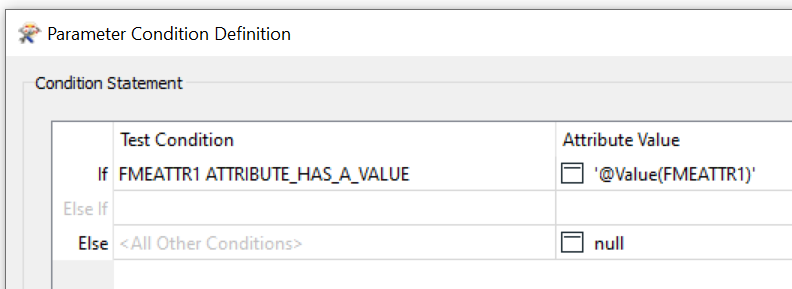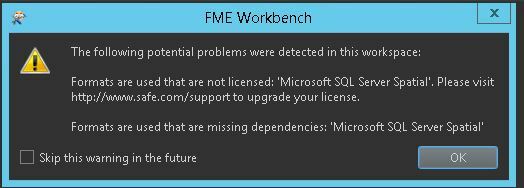So I noticed that when using a parameterized INSERT statement in SQL Executor:
INSERT INTO MYTABLE
(FIELD1, FIELD2)
VALUES (
'@Value(FMEATTR1)',
'@Value(FMEATTR2)',
)Any NULL becomes an empty string. How do I use logic like the above and still keep my NULLs? I've tried to wrap the entries in VALUES in case statements to catch NULLs and handle them differently - but to no avail.











 Is there any hack that would allow me to get past this with just the esri license?
Is there any hack that would allow me to get past this with just the esri license?